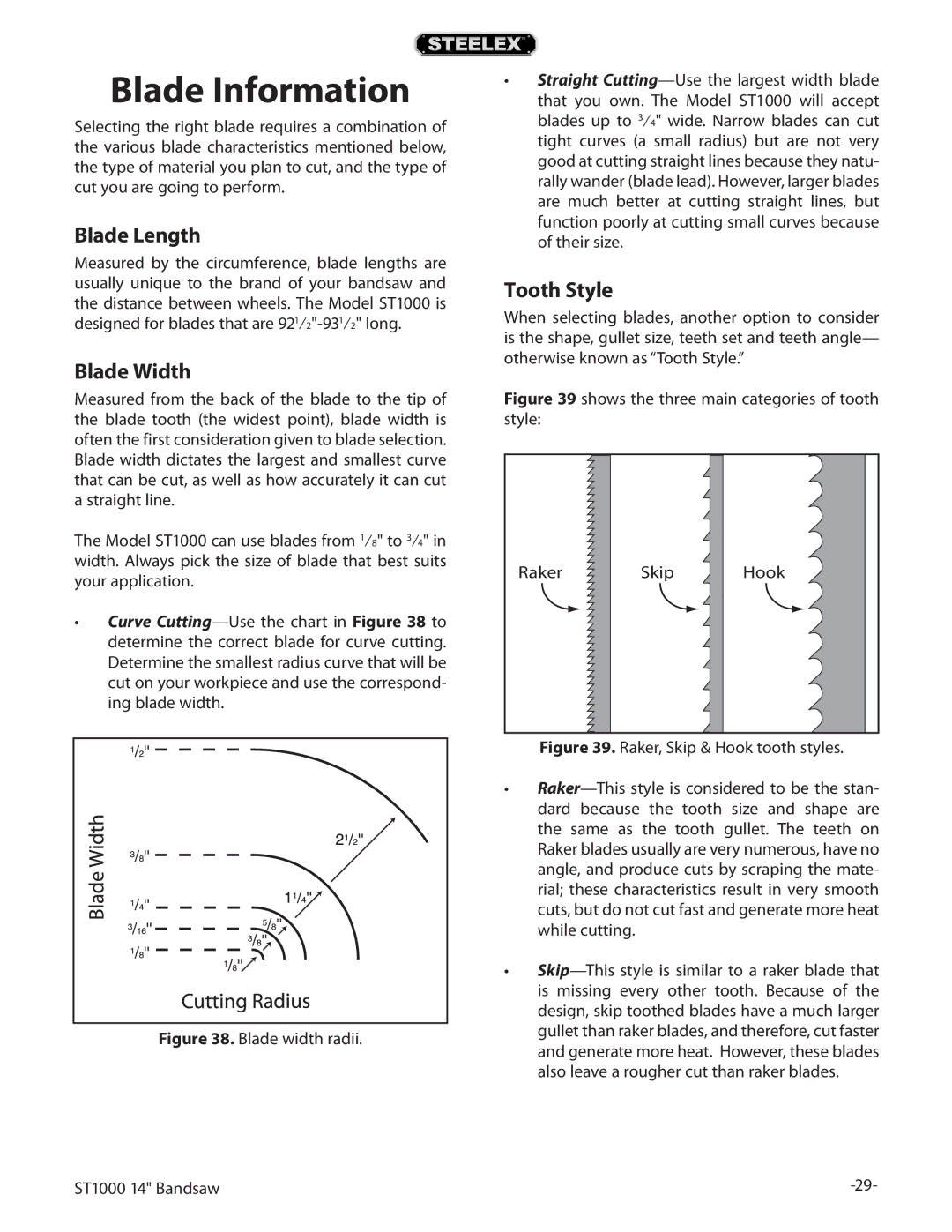
Blade Information
Selecting the right blade requires a combination of the various blade characteristics mentioned below, the type of material you plan to cut, and the type of cut you are going to perform.
Blade Length
Measured by the circumference, blade lengths are usually unique to the brand of your bandsaw and the distance between wheels. The Model ST1000 is designed for blades that are
Blade Width
Measured from the back of the blade to the tip of the blade tooth (the widest point), blade width is often the first consideration given to blade selection. Blade width dictates the largest and smallest curve that can be cut, as well as how accurately it can cut a straight line.
The Model ST1000 can use blades from 1⁄8" to 3⁄4" in width. Always pick the size of blade that best suits your application.
•Curve
Figure 38. Blade width radii.
•Straight Cutting—Use the largest width blade that you own. The Model ST1000 will accept blades up to 3⁄4" wide. Narrow blades can cut tight curves (a small radius) but are not very good at cutting straight lines because they natu- rally wander (blade lead). However, larger blades are much better at cutting straight lines, but function poorly at cutting small curves because of their size.
Tooth Style
When selecting blades, another option to consider is the shape, gullet size, teeth set and teeth angle— otherwise known as “Tooth Style.”
Figure 39 shows the three main categories of tooth style:
����� ���� ����
Figure 39. Raker, Skip & Hook tooth styles.
•Raker—This style is considered to be the stan- dard because the tooth size and shape are the same as the tooth gullet. The teeth on Raker blades usually are very numerous, have no angle, and produce cuts by scraping the mate- rial; these characteristics result in very smooth cuts, but do not cut fast and generate more heat while cutting.
•
ST1000 14" Bandsaw |
